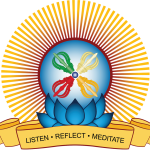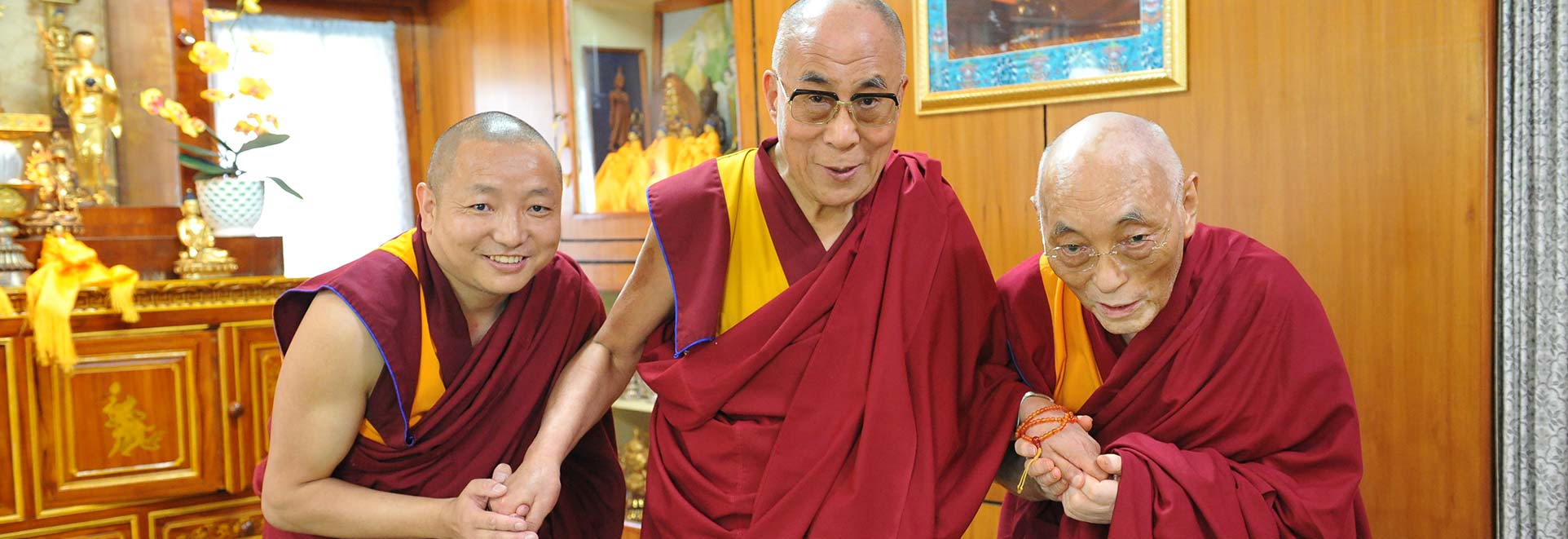Lineage Masters
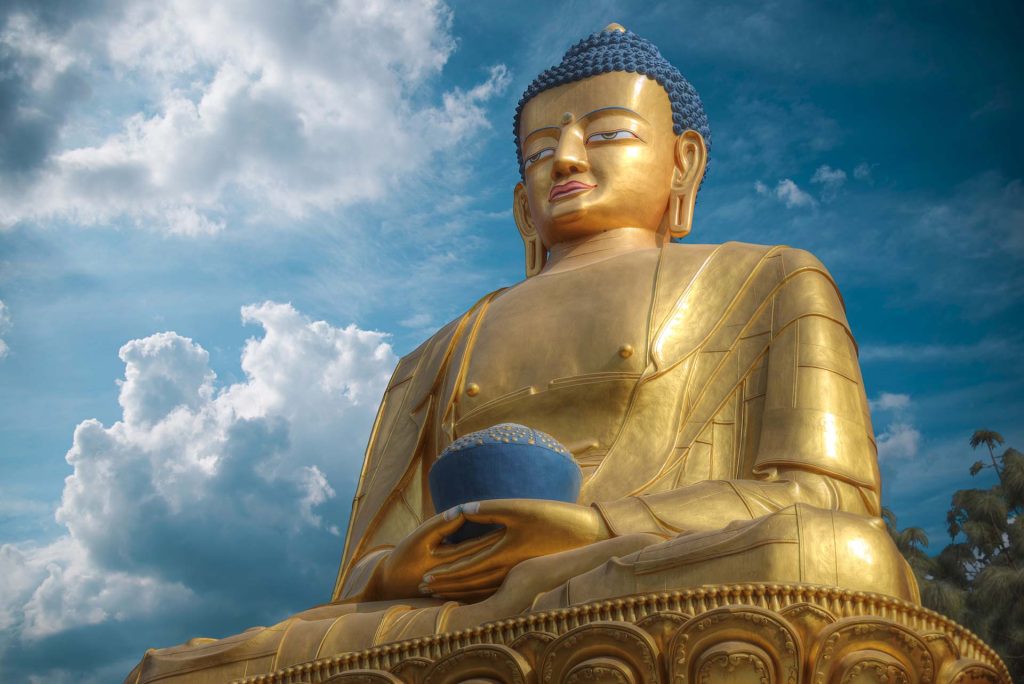
THE BUDDHA
Buddha, born with the name Siddhartha Gautama, was a teacher, philosopher and spiritual leader who is considered the founder of Buddhism. The name Buddha means “one who is awakened” or “the enlightened one.” He decided to give up his lavish lifestyle and endure poverty. When this didn’t fulfill him, he promoted the idea of the “Middle Way,” which means existing between two extremes. Thus, he sought a life without social indulgences but also without deprivation. After six years of meditation, on a fateful night in deep meditation he had all of the answers he had been seeking became clear, and he achieved full enlightenment thereby becoming Buddha while meditating under a Bodhi tree. He spent the rest of his life teaching others about how to achieve this spiritual state.
SOME KEY BUDDHISM BELIEFS INCLUDE:
Followers of Buddhism don’t acknowledge a supreme god or deity. They instead focus on achieving to have experienced nirvana. enlightenment—a state of inner peace and wisdom. When followers reach this spiritual level, they’re said
The religion’s founder, Buddha, is considered an extraordinary man, but not a god. The word Buddha means “enlightened.”
The path to enlightenment is attained by utilizing morality, meditation and wisdom. Buddhists often meditate because they believe it helps awaken truth.
Buddha’s most important teachings, known as The Four Noble Truths, are essential to understanding the religion. Buddhists embrace the concepts of karma (the law of cause and effect) and reincarnation (the continuous cycle of rebirth).
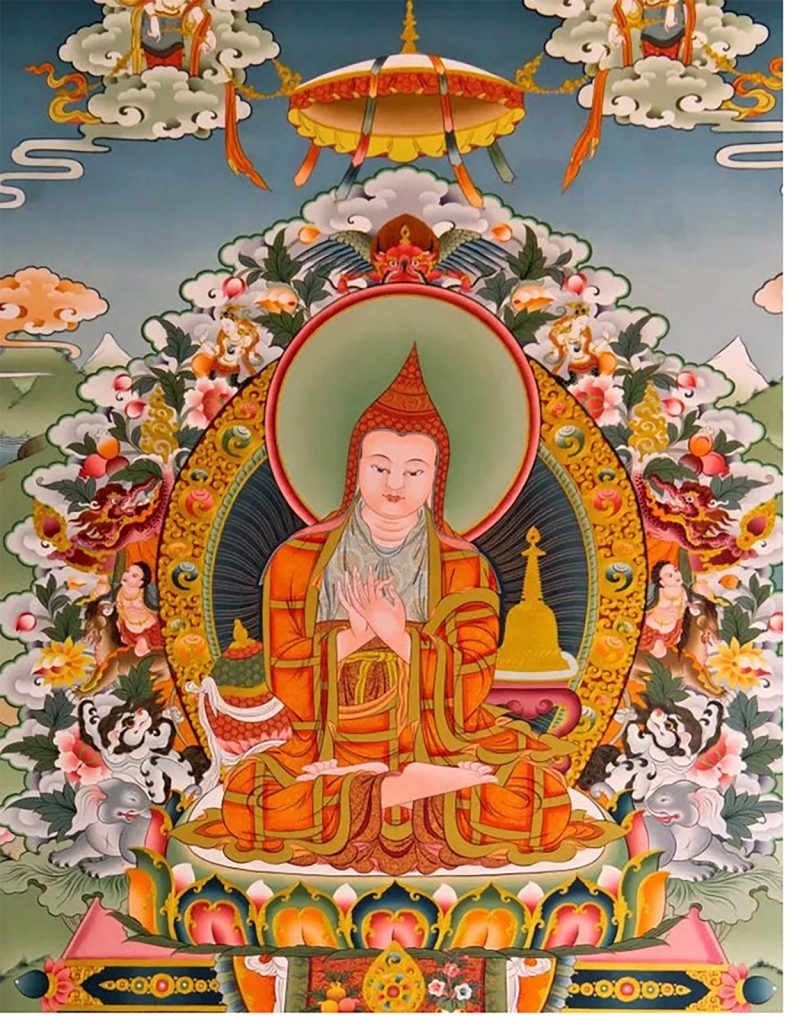
LAMA ATISHA
One of the greatest Indian Buddhist master (928-1054 AD) introduced the lamrim (stages of the path to enlightenment) and mind training. He reintroduced Buddhism in Tibet. Under the invitation of master Jangchub O, a ruler of Ngari in western Tibet, Lord Atisha visited Tibet, and upon the humble request from the king to present a kind of teaching that can be easily understandable and simple to integrate into practice; whereupon, master Atisha then wrote a text “The Stages of Path to Enlightenment.” This text encapsulates all the spiritual trainings of the Hinayana, Mahayana and Vajrayana. This well-known text later came to be the very basis and root text for all the lamrim works and mind training practices.
Lord Atisha passed away in Nyethang Monastery where his tomb was erected which still exists today. Atisha Dipamkara was said to have been born the second son of a royal house in eastern India, given the name Chandragarbha at birth. His father was Kalyana the Good and his mother Prabhavati the Radiant. After experiencing a vision of Tara at the age of eleven, on the eve of his marriage, he entered a religious path, initially practicing He- vajra in the company of tantrikas. Atisha was said to have studied with a number of the Indian Mahasiddhas, including Jetari, Kanha, Avadhutipa, Dombhipa, and Naropa, and it is reported that he received the bodhisattva vow at Nalanda from Bodhibhadra.
He later dreamed that the Buddha himself urged him to be ordain, and, at the age of twenty-nine, he did so, in a monastery in Bodh Gaya. For two years Atisha studied at Odantipuri with Dharmarakshita, the author of an important mind training manual, the “Wheel of Sharp Weapons” in Sumatra, he trained in bodhichitta with the monk Guru Suvarnadvipa, residing on the island for 12 years. Returning to India at age 45, he settled at the great monastery-university Vikramalashila. According to the story, towards the end of the 10th century, the king of Purang, Lha Lama Yeshe O, a descendant of the Yarlung kings whose dynasty ended with the collapse of the Tibetan Empire in 842, was dismayed at the state of Buddhism in Tibet. Monasteries had closed, and tantric practices that had previously been tightly controlled by the state sponsored religious institutions were proliferating among the Tibetan laity and merging with native practices. Yeshe O sent 21 young Tibetans to Kashmir with the aim of reviving the religion in his kingdom; only two survived to return to Tibet: the great translator Rinchen Zangpo who established many important monasteries in what is now Ladakh, and Legshe. It is reasonable to consider that with their sponsorship of Buddhism the Purang leaders hoped to model their kingdom on the great Empire of their ancestors. Janchub O, Yeshe O’s nephew and successor, even contemplated a restoration of Samye, the center of Tibetan Imperial religious display.
Returning to Purang, Rinchen Zangpo and Legshe told the kings about Atisha, whose fame was then known across the Buddhist world. In the 1030s Jangchub O sent a first mission of nine men to India headed by Gya Lotsawa Tsondru Sengge, with a sizable offering of gold. Gya Lotsawa’s eight companions did not survive the journey, and, unable to bring Atisha, Gya Lotsawa’s stayed on in India. Collecting more gold to send as an offering, Jangchub O sent the Tibetan monk Nagtso Tsultrim Gyalwa. According to legend, while collecting funds to hire Atisha’s services, Yeshe O was kidnapped by an ardently anti-Buddhist Qarlug Mongol ruler. The Mongolian demanded a ransom of all the wealth intended to be offered to Atisha, but Yeshe O told Jangchub O to leave him to his fate, that it was far more important that Atisha be brought to Tibet. Nagtso left for India in 1037, accompanied by several companions. The leadership of Vikramalashila is said to have refused to allow the Tibetans to take Atisha away, and the hagiographies make much of the subterfuge employed to prevent the success of their mission. Nevertheless, Atisha, said to have been urged by Tara herself to accept the Tibetan invitation, and engaged in some deception of his own in order to obtain permission from his abbot: he told his abbot that he was going to show the Tibetans the pilgrimage sites of India. The abbot, Ratnakara, saw through the deception, but permitted Atisha to leave on the condition that he return in three years. In 1040 Atisha and Nagtso set out for Tibet, accompanied by Gya Lotsawa, who had aided them at Vikramalashila, serving as translator. Unfortunately,Gya Lotsawa did not survive the journey, passing away before they arrived in Nepal. There, according to some, Atisha met Marpa, whom he asked to become his translator. Marpa declined. After two years of travel they reached Tolung, the capital of the Purang Kingdom.There Atisha resided for three years, giving teachings that gave birth to his master- piece, the Bodhipathapradipa, or “Lamp for the Path to Enlightenment.” The short text, in 67 verses, lays out the entire Buddhist path in terms of the three vehicles: Hinayana, Mahayana, and Vajrayana, and became the model for subsequent texts in the genre of Lamrim— The Stages of the Path.
There he also met his closest disciple, Dromton Gyalwai Jungne. Having grown close to Nagtso, Atisha next traveled to Nagtso’s homeland, Mangyul, where he stayed for a year, prevented from returning to India by a war in the region. Atisha is said to have sent a letter to his abbot requesting permission to stay in Tibet for the rest of his life. The two next traveled to U and Tsang, where Atisha re- ceived invitations to visit temples and give teachings. They arrived in Tsang in 1046, and Samye in 1047. Although it is commonly said that Atisha revived the monastic ordination in Tibet, in reality he was not involved in any ordinations. The Vinaya in Tibet had survived the so-called Dark Period that followed the collapse of the Empire, preserved by the so-called Eastern Vinaya monks, who fled to Amdo and maintained the tradition. The Eastern Vinaya tradition had already brought the Vinaya back to Tibet by the time Atisha arrived, and, because Atisha’s ordination was Lokattaravada rather than the Mulasarvastivada ordination that Tibetans had followed ever since the days of the Empire, he was not involved in any ordinations. There is evidence that many Tibetan communities of monks opposed Atisha’s presence, and that he was largely forbidden from teaching in the manner to which he was accustomed. In addition to Samye, he visited Tangpoche, founded by Khuton Tsondru Yungdru, the disciple of the Eastern Vinaya monk Lume. Atisha spent five years at Nyetang, in the southern Kyichu valley south of Lhasa. A temple was built there a year after Atisha’s death, where his body was embalmed. The next year, in 1056, Dromton established Reting Monastery, initiating the Kadam tradition.
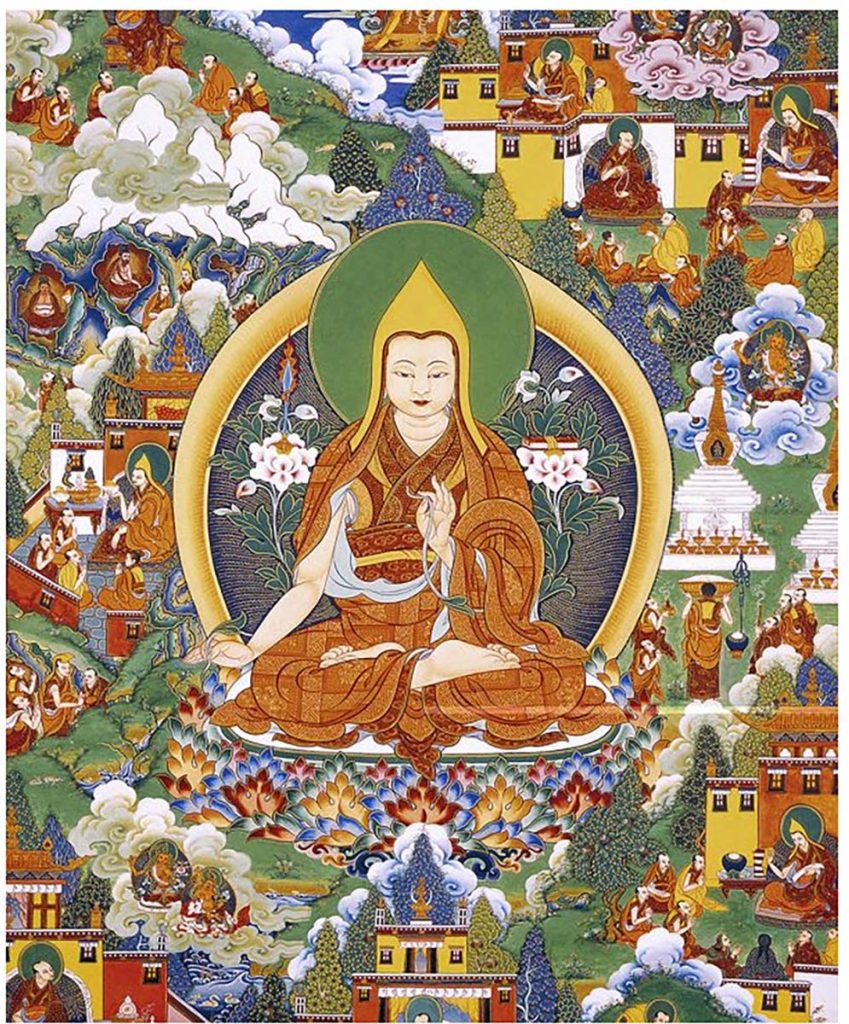
LAMA TSONGKHAPA
According to traditional lore, the birth of Tsongkhapa Losang Drakpa was predicted by the Buddha, who remarked to his attendant Ānan- da that the young boy, who had just approached Him with the present of a crystal rosary, would henceforth mature greatly throughout future lifetimes and eventually be born as one of the greatest propagators to ever turn the wheel of Dharma in the “Land of Snows.” This little boy was to establish monasteries and attain the highest goal. He would be known as Sumatikīrti (tib. Losang Drakpa). These predictions are paralleled by similar prophecies as enunciated by the great Indian Buddhist saint and tantric adept Padmasambhava, who “said that Losang Drakpa would be born in the eastern part of Tibet, near China, that he would be considered to be an emanation of a bodhisattva , and that he would attain the complete enjoyment body of the buddha.
Jé Rinpoche (the Precious Lord) was born 1357 in Amdo and ordained under the fourth Karmapa, Rölpä Dorje (1340–1383) at the age of three. His training was extensive and varied, since the young prodigy would engage in oral debate with the great intellects of all and any school or denomination.
His main teacher would be the Sakya master Rendawa (1349–1412), yet he also received important transmissions from the Kagyu and the Nyingma school, such as the Dzogchen master Namkha Gyaltsen (1326–1401) the siddha Legki Dorje, and others. Particularly close to his heart were the precious teachings of Kadam lineage that originated from the Indian master Atiśa Dīpakara. In his synthetic and eclectic view of the Buddhist traditions, the young master set out to integrate the teach- ings of sūtra and tantra in a coherent whole, without contradiction between the monastic tradition thoroughly rooted in pure moral con- duct on the one hand and the potent practices of tantric yoga on the other. This is clearly mirrored in the seamless transition between the “Great Treatise on the Stages on the Path,” which lays the foundation of the Sutrayāna, and the “Great Treatise on the Stages of Mantra,” that extrapolates the correct manner of practicing Tantrayāna. While the young reformer was a great scholar, Lama Tsongkhapa was no less of a tantric master, and in fact, was reported to have had the capacity to converse with Mañjuśrī and receive teachings and guidance from him directly.
Traditionally, four of Tsongkhapa’s great deeds are emphasized: (1) the renovation of the Maitreya Statue and its hosting edifice (2) the revitalization and reformation of the monastic tradition In 1409, (3) the installment of the “Great Prayer Festival” that continues to the present day, and finally (4) the founding of Ganden monastery in 1409. Assessing Jé Rinpoche’s unfathomable accomplishments, Thurman (1982: 28) writes in his “Life and Teachings of Tsongkhapa,” that upon “careful consideration of the list of Tsong Khapa’s discourses and teachings, it would also appear that he must have spent his whole life discoursing. Yet from the point of view of his daily practice it seems that he spent his life in meditative retreat. But on reading his literary output, it would seem that he could only have read and composed texts. His Holiness the Dalai Lama feels that Je Rinpoche’s greatest feat was to have done all three.” Tsongkhapa’s students comprised a score of highly realized scholar-practitioners, from amongst which the most famous are the first Dalai Lama (Gendün Drup), the first Paṇchen Lama (Khédrup Jé), and the first Ganden Tripa (Gyaltsab Jé).
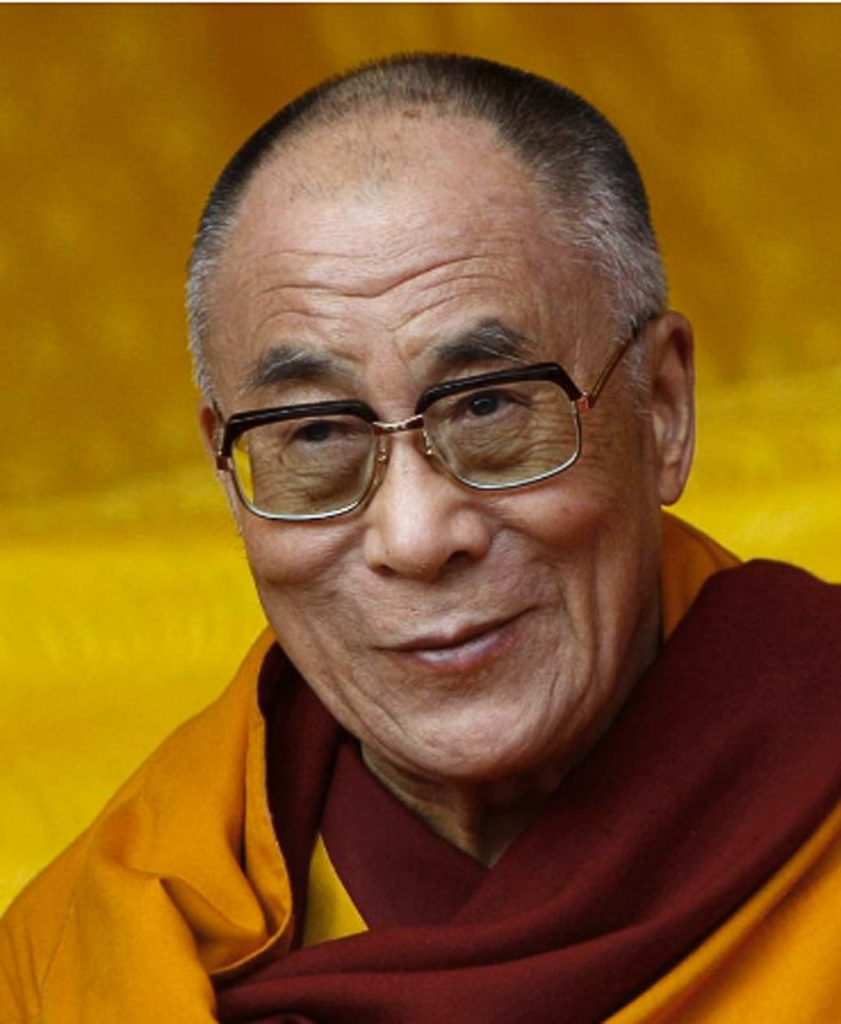
H. H. DALAI LAMA
The fourteenth Dalai Lama, Tenzin Gyatso, was born 1935 to a family of farmers, who raised horses, in Taktser village, not far from Kumbum monastery. Reting Rinpoche, Kewtsang Rinpoche and, particularly, the Paṇchen Lama were instrumental in his recognition. Two years after, the current Dalai Lama was escorted with great fanfare, from Kumbum monastery to Lhasa, where he was enthroned in 1950, aged 15, with the Chinese Army building up on the borders. In September 1954, he met the Chinese leader together with the Paṇchen Lama, leaving for India in 1959 at the outset of the Tibetan uprising. Ever since, the Nobel Peace prize laureate of 1989 has been tirelessly working for the promotion of human values, religious harmony, and the preservation of Tibetan culture, and continues to do so with undiminished energy, to the present day. The Lin- eage of the Dalai Lamas started with Gendün Drup (1391–1478), a direct disciple of Tsongkhapa. Traditional accounts relate that, in fact, the first Dalai Lama was nothing but the 51st incarnation of Avalokiteśvara, the Bodhisattva of compassion, as well as the reincarnation of Dromtönpa, initiator of the Kadam school and student of Atiśa, who had been the 45th incarnation of Chenrezig. The first Dalai Lama became the first abbot of Ganden monastery, founded Tashilhünpo near Shigatse, and formed a close relationship with the protective Goddess Palden Lhamo (Śrī Devī), the chief protective goddess of Tibet.
The fifth Dalai Lama, Ngawang Losang Gyatso, was born in 1617 amidst great political unrest and volatility. However, in reliance on the fortuitous association with Güshri Khan, the Dalai Lama was crowned both temporal and spiritual leader of Tibet in 1642. When the Khan passed away, it was the Dalai Lama’s duty to appoint the Khan’s son Tenzin Dorje as successor to the Mongol throne. Not only did the great fifth Dalai Lama reform the political and educational structure of Tibet, he was a prolific scholar, whose collected works span many volumes, and purportedly had auspicious visions throughout his life, some of which were documented in secret diaries. He brought together a fragmented political unit and welcomed other traditions, particularly the Nyingma school, some of whose practices he adopted. The sixth Dalai Lama, Tsangyang Gyatso, born 1682, is fondly remembered in Tibetan collective memory for his poetic, romantic, and touching spirit reflected in his writings, many of which are love poems. In 1701, a political intrigue wherein Lhasang Khan had the Desi Sangya Gyatso killed, troubled the young incarnation to the extent, that he renounced his monastic vows and took to sauntering in the parks with his companions, and singing drinking songs in the taverns at night. Five years after, he died on the way to China.
The thirteenth Dalai Lama, Thubten Gyatso, was born 1876 to a peasants’ household. Surrounded by great spiritual masters, such as Ling Rinpoche Lobsang Lungtok Tenzin Thrinlä and Phurbu Chok, he assumed poticial and spiritual power over Tibet and skillfully navigated her through the taxing times of the “Great Game” that czarist Russia and imperial Britain were playing over who would gain suzerainty over Tibet. He survived both the 1904 Younghousb and military expedition to Tibet and the Chinese invasion of 1910, as a result of which his authority greatly increased. He modernized and reformed the political and spiritual structures of Tibet before he passed away in 1933.
